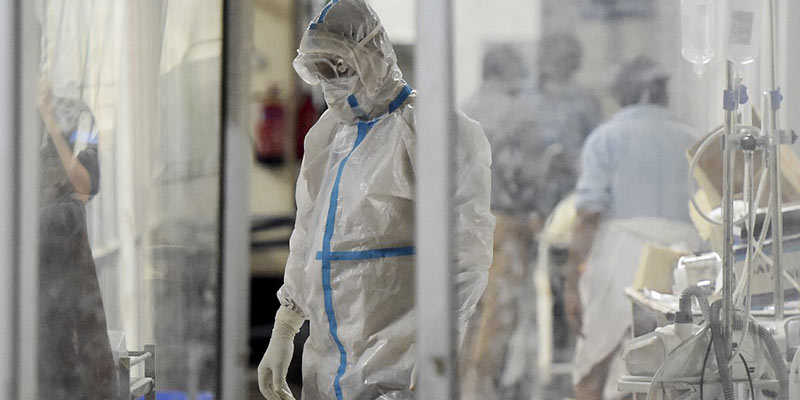- India
- Sep 23
How is the SDRF funded?
• The Centre informed the Supreme Court that the National Disaster Management Authority (NDMA) has recommended that Rs 50,000 be given to the kin of those who died of COVID-19.
• It said that ex-gratia assistance will also be given to the kin of those who died of the virus due to involvement in COVID-19 relief operations or activities associated with the preparedness for dealing with the pandemic.
• The government said that NDMA has issued the guidelines on September 11 in compliance with the directions of the Supreme Court given on June 30 wherein it had directed the authority to recommend guidelines for ex-gratia assistance.
• The ex-gratia assistance will be provided by states from State Disaster Response Fund (SDRF) and all claims will be settled within 30 days of submission of required documents, and disbursed through Aadhaar linked Direct Benefit Transfer procedures.
State Disaster Response Fund
• The State Disaster Response Fund (SDRF), constituted under Section 48(1)(a) of the Disaster Management Act, 2005, is the primary fund available with state governments for responses to notified disasters.
• SDRF is administered as per the recommendations of the successive Finance Commissions set up under the Article 280 of the Constitution of India. Financial assistance is provided to the state government from SDRF as per the established procedure, for meeting the expenditure on relief provided to people affected by notified disasters.
• The central government contributes 75 per cent of SDRF allocation for general category states/UTs and 90 per cent for special category states/UTs (northeast states, Sikkim, Uttarakhand, Himachal Pradesh, Jammu & Kashmir).
• The annual central contribution is released in two equal instalments as per the recommendation of the Finance Commission.
• SDRF shall be used only for meeting the expenditure for providing immediate relief to the victims.
Disasters covered under SDRF: Cyclone, drought, earthquake, fire, flood, tsunami, hailstorm, landslide, avalanche, cloudburst, pest attack, frost and cold waves.
Local disaster: A state government may use up to 10 per cent of the funds available under the SDRF for providing immediate relief to the victims of natural disasters that they consider to be ‘disasters’ within the local context in the state and which are not included in the notified list of disasters of the ministry of home affairs subject to the condition that the state government has listed the state specific natural disasters and notified clear and transparent norms and guidelines for such disasters with the approval of the State Authority — the State Executive Authority (SEC).
• In March 2020, the central government, by way of a special one-time dispensation, decided to treat COVID-19 as a notified disaster for the purpose of providing limited assistance under SDRF towards containment measures.
• For the containment measures allowed under SDRF, state governments are allowed to spend upto 50 per cent of the annual allocation of SDRF.
• The NDRF supplements SDRF of a state, in case of a disaster of severe nature, provided adequate funds are not available in SDRF.
National Disaster Response Fund
• The National Disaster Response Fund (NDRF) was constituted under Section 46 of the Disaster Management Act, 2005.
• The central government has laid out the modalities for receipt of contributions/grants from any person or institution for the purpose of disaster management in the National Disaster Response Fund (NDRF) as per Section 46(1)(b) of the Disaster Management (DM) Act, 2005.
Section 46 of the DM Act says that:
1) The central government may, by notification in the official gazette, constitute a fund to be called the National Disaster Response Fund for meeting any threatening disaster situation or disaster and there shall be credited thereto —
(a) An amount which the central government may, after due appropriation made by Parliament by law in this behalf, provide.
(b) Any grants that may be made by any person or institution for the purpose of disaster management.
Manorama Yearbook app is now available on Google Play Store and iOS App Store

